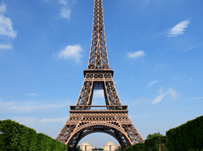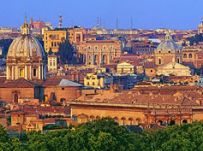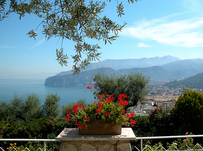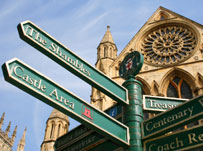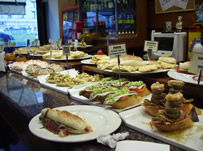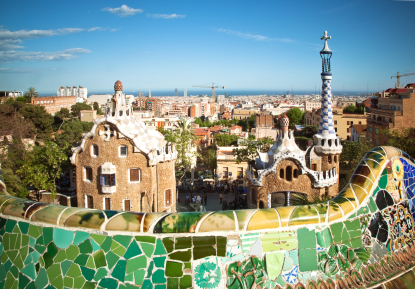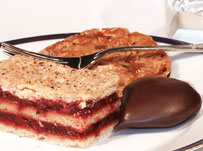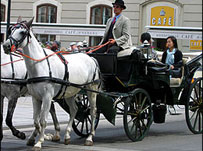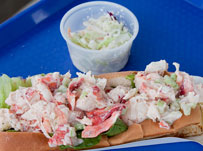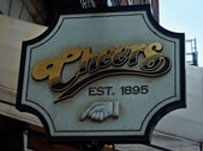Test your German by reading our insider’s guide to Munich
Muenchen – die ideale Stadt fuer einen Sprachurlaub
Muenchen ist die Haupstadt des Bundeslands Bayern und mit ca. 1,35 Millionen Einwohnern die dritt groesste Stadt Deutschlands. Aber keine Angst – das Stadtzentrum kann man durchaus zu fuss erkunden.
Muenchen ist ausserdem fuer seine hervorragenden Universitaeten (Ludwig Maximilian Universitaet und Technische Universitaet) bekannt. Insgesamt studieren in Muenchen circa 100.000 Studenten was dazu beitraegt, dass in Muenchen praktisch zu jeder Uhrzeit irgendwo irgendeine Party stattfindet.
Kultur und Gastronomie
Ein weit verbreitetes Vorurteil ueber Bayern besagt, dass alle Bayern meistens in Tracht gekleidet sind und man sie wegen ihres Dialektes nicht, oder nur schlecht versteht.Das stimmt nur teilweise:
Die typisch bayrische Tracht (Lederhosen fuer Maenner und Dirndl fuer Frauen) wird heutzutage nur noch bei speziellen Anlaessen wie zum Beispiel dem Oktoberfest oder dem Starkbierfest getragen.
Wenn ein echter Bayer mit Auslaendern spricht werden diese tatsaechlich nichts verstehen. Selbst innerhalb Deutschlands gibt es zwischen Bayern und Nicht-Bayern oft Verstaendigungsprobleme. In Muenchen wird allerdings ein eigener und bei weitem nicht so ausgepraegter Dialekt gesprochen der normalerweise gut verstaendlich ist.
Es gibt fast an jeder Strassenecke gute Restaurants und die Biergaerten sind vor allem im Sommer sehr zu empfehlen.
Architektur und Kunst
Muenchen hat in dieser Hinsicht einiges zu bieten. Das neue Rathaus, Theatinerkirche, Residenz, Olympiapark, BMW Welt, Schloss Nymphenburg und vieles mehr. Auch fuer Kunstliebhaber ist Muenchen ein ideales Ziel. Vor allem die Pinakotheken ziehen etliche Besucher an und sind schon von aussen betrachtet ein Kunstwerk. In Muenchen gibt es drei Pinakotheken: Die alte und die neue Pinakothek und die Pinakothek der Moderne.
Lifestyle
Muenchen ist eine sehr teuere Stadt (allerdings nicht so teuer wie London) und das merkt man auch. Luxusautos, teuere Restaurants, Penthouses, Nobelclubs und so weiter. Aber das gehoert zu Muenchen und traegt zu der besonderen Atmosphaere bei.
Abends beziehungsweise Nachts ist in Muenchen ebenfalls einiges geboten. Einige der besten Clubs sind in Muenchen zu finden und es ist fuer jeden Musikgeschmack etwas dabei.
Insider Tips
– Eisbachsurfer (stehende Welle an der Surfer ganzjaehrig ihr Koennen testen)
– Tollwood festival (Das meiner Meinung nach beste Festival Muenchens. Tolle Atmosphaere, internationale Kueche und internationale Kuenstler)
– Viktualienmarkt (Markt im Stadtzentrum mit qualitativ hochwertigen Lebensmitteln)
Munich – the ideal city for a Language holiday
Munich is the capital of Bavaria and with its ca. 1.35 Million habitants, is the third largest city in Germany. But don’t worry – it is possible to explore most of the city centre on foot.
Munich is also known for its outstanding universities (Ludwig Maximilian Universitaet und Technische Universitaet). All in all there are some 100.000 people studying in Munich, which explains why there is always a party going on somewhere!
Culture and gastronomy
A widely held stereotype about Bavaria is that every Bavarian wears a traditional costume and is – due to his dialect – impossible to understand. That is only partly true:
The typical Bavarian costume (Lederhosen for men and Dirndl for women) is only worn for special occasions these days. These special occasions are for example the Oktoberfest or the Strong-beer-festival.
If a real Bavarian talks to a foreigner it is very likely that the foreigner won’t understand a single word. Even inside Germany there are often communication issues between Bavarian speakers and German speakers. However, in Munich we tend to speak our own special dialect which is not as distinctive and a lot easier to understand.
In Munich you will find good restaurants around every corner and I can really recommend the Beer gardens, especially during the summer months.
Architecture and art
If you are interested in architecture and art Munich has a lot to offer. The new town hall, Theatinerkirche, Residenz, Olympiapark, BMW World, Schloss Nymphenburg and a lot more. Munich is also worth a visit if you are into art. The Pinakotheken (art gallerys) in particular attract plenty of visitors and even from the outside they are a piece of art in themselves. In Munich there are three Pinakotheken: The old and new Pinakothek and the Pinakothek of the moderns.
Lifestyle
Munich is a very expensive city (not as expensive as London though) and this will be evident when you visit. Luxury cars, expensive restaurants, penthouses, fancy clubs and so on. But that is part of Munich’s appeal and contributes to the special atmosphere.
In the evenings there is also plenty to do. Munich has some of the best clubs and offers a venue for every kind of music taste.
Insider tips
– Eisbach (a standing wave where surfers test their skills all around the year)
– Tollwood (my favourite festival in Munich. Great atmosphere international cuisine, international music acts)
– Viktualienmarkt (Bavarian market where you can really immerse yourself in the culture and get some great quality food as well)
Cactus offers a range of German courses in Munich. For full details, including start dates and prices, please visit the Cactus Language website.


